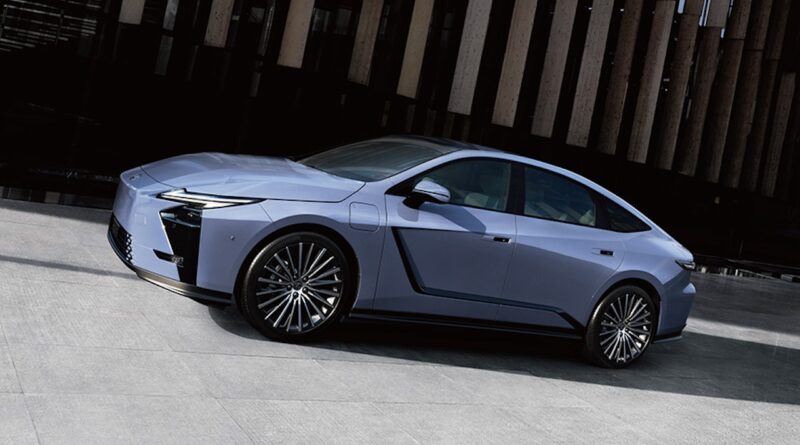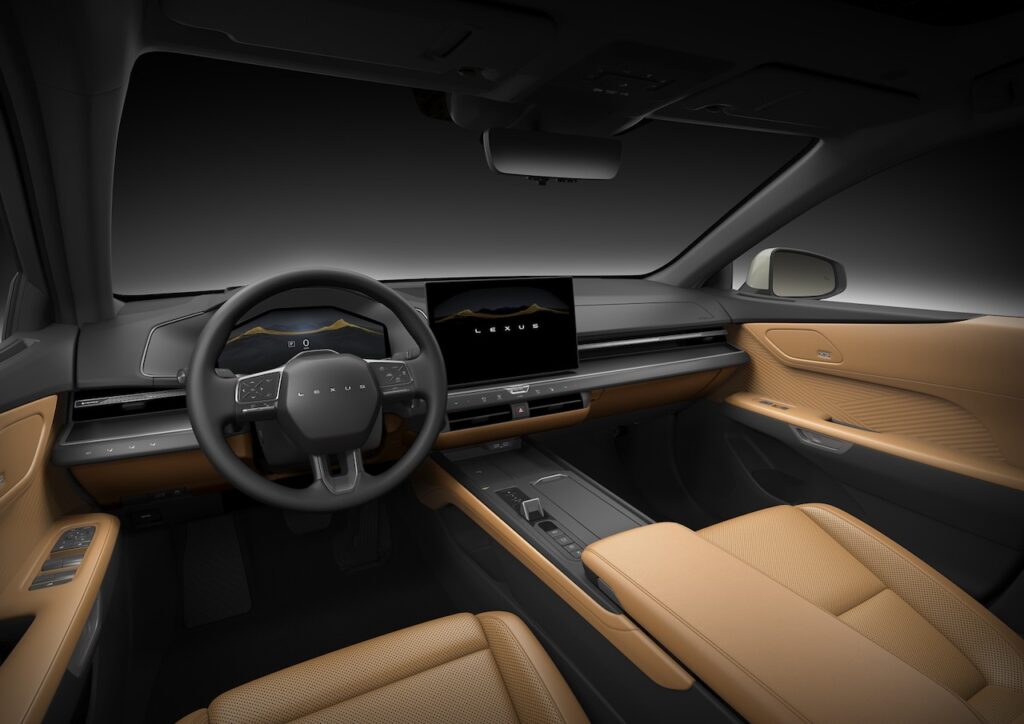
Lexus has taken the wraps off the eighth‑generation ES at the Shanghai motor show, and for the first time the executive saloon will be offered as a fully electric model alongside updated hybrid variants. The 2026 ES – a larger, more overtly premium interpretation of the long-running model that shares the TNGA‑K underpinnings with the Toyota Camry – arrives with clear ambitions to challenge European rivals such as the BMW i5 and Audi A6 e‑tron.
Design and packaging
The new ES draws design cues from the 2023 LF‑ZC concept, adopting a low‑drag, fastback silhouette and a sportier rear treatment. Compared with its predecessor the car has grown substantially: at 5,140 mm long it’s 165 mm longer, 55 mm wider and roughly 110-115 mm taller. Lexus says the dimensions move the ES well into large‑saloon territory – almost approaching S‑Class proportions.
Exterior details differentiate electrified and hybrid variants. Hybrid ES models retain a slim air intake above a reduced, more compact take on the Lexus spindle grille, whereas the EV version features a sealed front fascia with no opening. Up front, ultra‑thin daytime running lamps sit above larger, largely concealed main lamps with a distinctive tick‑shaped signature. Along the flanks a new “hockey stick” graphic meets a rising beltline; wheel choices extend to 19‑ or 21‑inch alloys, emphasising the car’s sporty intent.
Interior and luxury appointments
Inside the ES, Lexus has pushed further into the luxury space. A large central infotainment display is paired with a 12.3‑inch digital instrument cluster, and the dash is largely free of traditional buttons – capacitive shortcuts are integrated into the surfaces. Practical touches include dual wireless smartphone chargers. Lexus has also added amenities more commonly associated with premium limousines: ambient lighting, an onboard fragrance dispenser, and a panoramic sunroof that can be switched from transparent to opaque at the press of a button. Rear‑seat comfort is a priority too, with reclining massage seats, extendable leg rests and a front passenger seat that can tilt forward to maximise rear‑cabin space.

Powertrains and electric range
Lexus will offer a range of powertrains. At the entry point sits a new E300h, powered by a 2.0‑litre four‑cylinder hybrid mated to an electronically controlled CVT. Output is 145 kW in front‑drive form and 148 kW with all‑wheel drive. Lexus also carries over the previous 2.5‑litre hybrid, now rated at 182 kW and available with front‑ or all‑wheel drive.
The headline is the all‑electric pair. The ES 350e is a front‑drive EV producing 165 kW and is claimed to achieve up to 685 km on the Chinese CLTC cycle. A dual‑motor ES 500e with all‑wheel drive develops 252 kW and is rated at up to 610 km (CLTC). Lexus has not disclosed battery chemistry or specific cell energy density. Charging is limited to 150 kW peak, with a stated 10-80 per cent recharge time of around 30 minutes – notably slower than some rivals that quote 18-20 minute rapid‑charge times. Lexus also says the new ES is quieter and more refined than before, and it will be equipped with advanced driver assistance and autonomous driving aids.
What this means for Australia
Lexus Australia has not yet confirmed the 2026 ES lineup or pricing; the new models are widely expected to arrive in the first half of 2026. The broader features list, generous dimensions and premium rear‑seat appointments position the ES to compete directly with luxury electric and hybrid saloons from Audi, BMW and Mercedes‑Benz. That said, real‑world appeal in Australian showrooms will hinge on official local specifications, WLTP or ADR‑equivalent range and charging figures, and price positioning against established German rivals.
Conclusion
The 2026 Lexus ES represents a significant evolution for the model, moving Lexus further into the electric luxury‑saloon arena without abandoning hybrid technology. With its blown‑up proportions, richer interior specification and two EV options, the new ES aims to combine Lexus refinement with competitive electric capability. For Australian buyers the key questions remain certification, actual range under international testing standards, charging performance and pricing – all of which will determine whether the ES can unseat familiar European competitors on our roads.
About EV Evolution
EV Evolution is the leading online platform dedicated to Australian electric vehicle owners and enthusiasts. We foster a vibrant community, delivering essential EV news and insights, and enhancing user engagement through our innovative, AI-powered chatbot for dynamic discussions. Our mission is to empower Australian electric vehicle owners and enthusiasts by fostering a vibrant, AI-driven online community that connects, informs, and advances the nation’s electric vehicle landscape.




